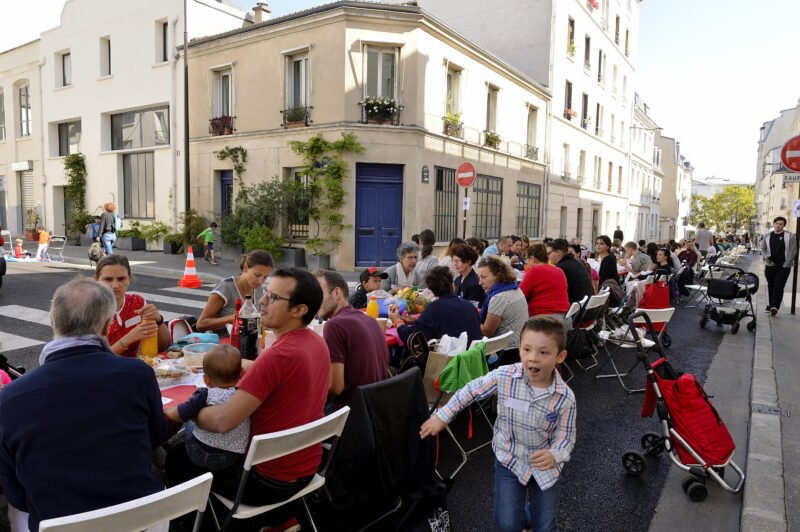QR Storytelling
140 Years have passed since the happenings of the Paris Commune, the governance experience known to be the first historical assumption of power by the working class during the Industrial Revolution, that briefly ruled Paris between March and May 1871. Despite the relatively short life and the limited geographical range of the experience (the governance was only extended to the city of Paris itself, as a city council), the Commune is still considered an extremely important happening in the history of the French capital.

The particular, symbolic value of the action, made it become an extremely violent scenario, heavily hitting the city and its new representatives and supporters, provoking the destruction of monuments with political charge, the creation of barricades, and the spread of summery executions. Scenes of this sort of small scale civil war are now being repurposed in an interesting project developed by Raspouteam collective, which mixes techniques of street art, interaction, and broadcast of historical information through digital media in a smart way.
The project presents a series of interventions in what it considers to be the key places to understand the experience of the Paris Commune — images related to the event are pasted on the walls and an accompanying QR code links us to a website where the history of the Commune is presented. But what is most interesting is that the action happens in real time — the information related to a certain event is published the same day in which the event was historically registered, with of course exactly 140 years of delay. The presentation of a real-time, site-specific historical chronicle of facts happened in the city is a clever way of merging guerrilla techniques, mobile web technologies and at the same time a tribute to the press, as the information is nostalgically brought to us under the shape of a web-based illustrated journal.

Raspouteam seems to be familiar both with historical happenings and QR codes — their previous project Désordres Publics also involved a series of QR codes glued on white tiles in Paris, which where placed at key spots of famous social disorders that once happened in the city. We can imagine that, between French Revolution, Paris Commune, May 68 and more recent happenings, Paris should be filled with codes, that provide open, accessible pieces of the history of the city. An interview with the authors is available here (in French).



